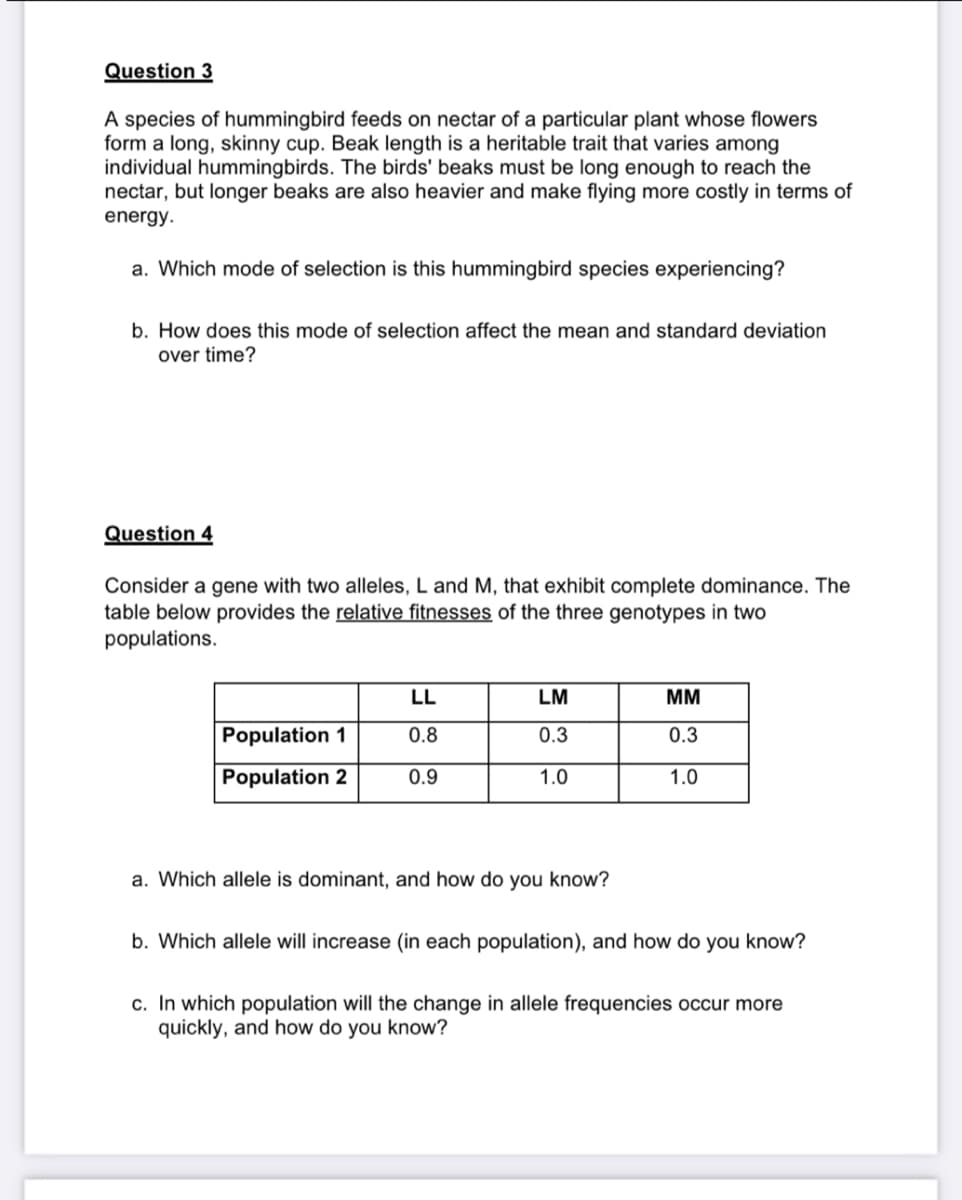Question 3 A species of hummingbird feeds on nectar of a particular plant whose flowers form a long, skinny cup. Beak length is a heritable trait that varies among individual hummingbirds. The birds' beaks must be long enough to reach the nectar, but longer beaks are also heavier and make flying more costly in terms of energy. a. Which mode of selection is this hummingbird species experiencing? b. How does this mode of selection affect the mean and standard deviation over time? Question 4 Consider a gene with two alleles, L and M, that exhibit complete dominance. The table below provides the relative fitnesses of the three genotypes in two populations. LL LM MM Population 1 0.8 0.3 0.3 Population 2 0.9 1.0 1.0 a. Which allele is dominant, and how do you know? b. Which allele will increase (in each population), and how do you know? c. In which population will the change in allele frequencies occur more quickly, and how do you know?
Bacterial Genomics
The study of the morphological, physiological, and evolutionary aspects of the bacterial genome is referred to as bacterial genomics. This subdisciplinary field aids in understanding how genes are assembled into genomes. Further, bacterial or microbial genomics has helped researchers in understanding the pathogenicity of bacteria and other microbes.
Transformation Experiment in Bacteria
In the discovery of genetic material, the experiment conducted by Frederick Griffith on Streptococcus pneumonia proved to be a stepping stone.
Plasmids and Vectors
The DNA molecule that exists in a circular shape and is smaller in size which is capable of its replication is called Plasmids. In other words, it is called extra-chromosomal plasmid DNA. Vectors are the molecule which is capable of carrying genetic material which can be transferred into another cell and further carry out replication and expression. Plasmids can act as vectors.

Trending now
This is a popular solution!
Step by step
Solved in 2 steps




